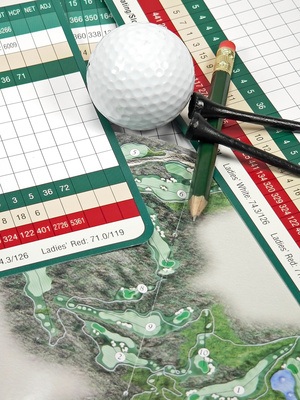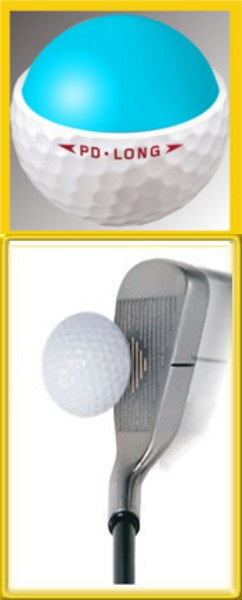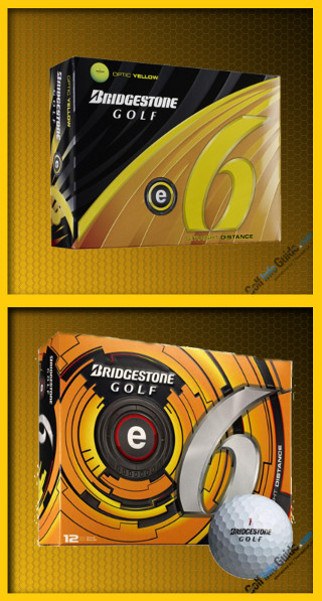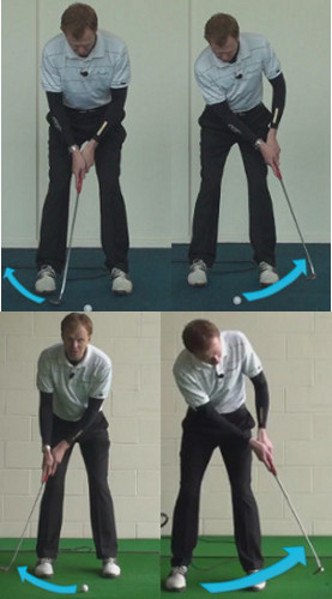
Teaching pros agree that when looking to shoot lower scores, most amateurs should focus on the short game. After all, the majority of shots are played within 100 yards of the green.
Sure, it's important to carry a versatile mix of wedges and a putter that fits your stature and stroke. But if you're playing the wrong golf ball, you won't get the most from those clubs.
First off, you should always play the same make and model of golf ball. You'll quickly gain a feel for the ball and, before long, you'll instinctively know how it will react coming off the clubface and landing on the green. Consistency is key.
When choosing a ball, understand that there's not much variation from one to the next when it comes to distance. Today's tour-level balls (the ones the pros use) are nearly as long as so-called “distance balls.” The biggest difference is spin rate, where tour balls are superior.
Because they spin faster, tour balls are best for the short game. If you're accustomed to playing distance balls, adjusting to the tour ball's extra spin takes time and practice. But you'll see a marked difference in your ability to control chips, pitches and bunker shots, as well as half and full shots with the wedges.
It's true that tour models are the most expensive of all golf balls. Fortunately, the major brands each offer models between their tour and distance balls that still provide adequate spin (at a lower price). The Titleist NXT Tour and Bridgestone e5 are good examples.

Golf Ball Fitting – Short Game Performance is Key
When most golfers head to their local pro shop to pick out a new golf ball, they have one thing on their mind – more distance. Depending on the type of golf ball that you use, it is possible to add yards to your drives without changing a single element in your swing. Golf ball technology has come a long way in recent years, and you can choose a ball with the perfect characteristics to match the dynamics of your swing technique. However, maximizing your distance off the tee shouldn't be the only thing you are concerned with when picking out a ball – you also need to ensure that the ball will perform well for you on and around the greens.
The short game is commonly overlooked by the average amateur golfer, which is one reason many players aren't able to lower their scores successfully. While every shot that you hit on the course is important, the shots played on and around the greens are particularly important because they can so dramatically alter your score. For example, hitting your drives an extra 10 yards down the fairway might be fun, but cutting back your total number of putts from 35 to 30 within a round is going to have a much bigger impact on your score at the end of the day. Smart golfers understand that the fastest way to improved scores is performing better in the short game.
Golf ball fitting has become more and more popular in recent years, as advances in technology have led to more options becoming available on the market. No longer do you have to pick from just a handful of golf ball options when you visit the golf shop – there are now dozens of models to pick from, each offering a unique set of characteristics. Also, you can't just pick out the most expensive model on the shelf and assume you are getting the 'best' ball. In fact, there is no ball that can be identified as the 'best'. Instead, it is all about locating the right ball for your game. A model that is perfect for your swing and your short game may be a terrible choice for another player. Going through a ball fitting session with a professional will help you to locate the model that is going to present the right characteristics for your skill set.
There are two elements in play when picking out a golf ball that will perform well in your short game. The ball needs to feel good coming off the face of your putter, and it also needs to behave correctly on chip or pitch shots. Obviously, when putting, it all comes down to feel, and spin rate is a non-factor. When chipping or pitching, however, you want to make sure the ball is able to generate an adequate amount of spin for the types of shots that you like to hit. This is where it is so important to understand your own game. If you know what you are trying to do with the ball in the short game, you can then pick out a model that suits your needs just right.
All of the instruction contained below is based on a right handed golfer. If you play left handed, please be sure to reverse the directions as necessary.

Understanding the Golf Ball Price Scale
As mentioned above, there is no such thing as the 'best' golf ball. You could ask ten different players to tell you which ball is best, and you would get at least five or six different answers. Much like you could never get golfers to agree on the best putter on the market, they will also never agree on which golf ball is best. The game is too individual in nature to ever have a consensus on any equipment-related topic.
With that said, you can use the price of golf balls to gain an idea of what each model has to offer. If you visit your local golf shop, or look online, you will find that there are golf balls available for anywhere from $10 per dozen on up to $40 and more. You won't automatically get the right ball for your game by spending a lot of money, but the sale price will tell you something about the design of each ball. Generally speaking, cheap golf balls in the range of $10 - $20 per dozen will be hard. These golf balls will make a distinct 'clicking' sound when you hit them, and spin will be hard to come by. Most of the time these are the golf balls that are used by beginners. Not only to they not require a significant financial investment, but the low spin rate is also beneficial to players who don't yet have control over their golf swing.
On the other end of the spectrum, the high-end models will typically offer the softest cover and highest spin rate. Once the price per dozen gets up to $30 and beyond, you can expect to receive a golf ball that provides nice feel around the greens, and ample spin on full swing shots. These are the golf balls used by professionals on the Tour week in and week out. The pros love the soft feel and backspin that these balls offer, and they are skilled enough to avoid putting too much side spin when hitting full shots.
It is important to understand where you fit into this price scale before you buy your next box of balls. If you are a true beginner, the choice is easy – pick out an inexpensive dozen and head to the course. In your first year or two of golf, your skills simply aren't developed enough to benefit from a higher-end ball, so there is no need to waste the money. As you develop, you can look at increasing the quality of your golf balls as your game comes into form. Likewise, if you are an accomplished player with a low handicap, you will want to be playing one of the high-end models. You have the skill needed to manage your ball flight, and the soft feel around the greens will help save you strokes.
Of course, most golfers fall somewhere in between those two extremes. You may not be a total beginner, but you probably don't fall into the category of accomplished player just yet, either. If that is the case, you will need to do a little bit of homework before you can settle on the right golf ball. Only when you find the ball that is going to meet your needs in both the long and short game will you be able to reach your true potential on the course.

Address the Full Swing First
As the content above has highlighted, you need to take your short game into consideration when you are picking out the right golf ball for your game. However, you should still start with the focus on your long game as you go through the ball fitting process. Why? Simply because you aren't going to be able to play at a reasonable level unless your ball is appropriately suited to your swing. Yes, you want the ball to fit your short game, but you need to find options that fit your full swing first. Once you have narrowed down the list of golf balls that fit your swing to a select few, you can then pick a winner based on short game performance.
Think about it this way - the golf balls that make it through the first round of 'cuts' are the ones that you can generate quality ball flights with while using a variety of clubs. Let's say there are twenty option for golf balls at your local store (there are likely even more than that). By addressing your full swing first, you can probably cut that list of twenty options down to five or six. Make sure that each ball that remains on the list is one that you would be happy with from a long game perspective. You don't want to fall in love with a golf ball in your short game only to find that it just doesn't work when it comes to your full swing. Eliminate all golf balls models that give you trouble in the long game and move on to the short game only when you are fully satisfied with your options.
So how do you narrow down the list in the first place? After all, it would be rather expensive to buy every golf ball on the market in order to do your own tests. Instead of that, visit your local golf shop and ask if they offer a ball fitting service. Many golf shops will be able to put you through a series of tests and then recommend golf ball options based on the results of those tests. The person who completes your ball fitting will likely be the same person who offers club fitting service, so you could potentially do both of those things in the same visit. There will likely be a fee for going through the fitting process, but it will be far more affordable than buying a long list of golf ball models.
During your fitting, keep an open mind and trust the results that the computer and the fitting professional are offering you. Many golfers have a preconceived idea of which ball they should be playing, and they stick with that notion even if the data says something else. You never know which golf ball might end up being the one to jive perfectly with your game. The results might indicate that you should be playing one of the top-of-the-line models, or they might suggest a less-expensive choice. Before you leave your fitting session, make sure you get a list of a few different golf balls that would be a good match for your game so you can try them all before finally picking a winner.

Testing Golf Ball Options in the Short Game
If you have taken the time to do a fitting session, you will now have narrowed down your golf ball options to a select few. The next step in the process is to test each of those balls in your short game. Since the short game is more about feel than it is about science, you will need to simply try each of them one by one until you discover the perfect fit. You won't be able to rely on a computer to tell you which ball is your best bet in the short game - this part of the process is all up to you.
To get started on your testing process, you will need to acquire all of the golf balls that remain on your list. The best option at this point is to buy sleeves of three balls each, rather than purchasing full dozens. Three golf balls of each model will be more than enough for your testing purposes, and you won't have to spend nearly as much money to get all of the balls you need. As another option, you could look online for a used golf ball dealer that carries the various models you are considering. Used golf balls don't always fly the same as new golf balls, but they should perform in a similar fashion in the short game.
Once you have purchased each golf ball you wish to test, load them into your bag and head to the short game practice area at your local golf course. You should find an area where you can both putt and chip so that you can test out the golf balls on a variety of shots. Ideally, the short game area will have some fairway-length grass to chip from, as well as some rough.
Following is a step by step process that you can use to test the golf balls you have selected. Once you go through the steps below, you should have a great idea as to which golf ball you are going to stick with for the long run.
- To start, take your putter out of the bag and bring one golf ball of each model with you onto the putting green. Start with long putts that run across most of the length of the putting green. Drop your golf balls on one end of the green and pick a target hole on the other end of the green. Roll each ball across the green while focused only on getting the speed right. Each ball will likely feel a little different, so note the various feelings that you get when striking each ball with the face of the putter. Roll putts back and forth across the putting green for a few minutes until you start to get an idea for the feel of each ball. You don't need to be picking a favorite at this point - you are just getting an initial feel for the options.
- Next, move on to shorter putts. Set up about three feet from a hole that is cut in a relatively flat part of the green. One by one, try to knock each ball into the back of the hole. It is possible that you won't feel much difference in the models when putting from this close, but it is still worth your time to hit a few minutes' worth of short putts. You need to have confidence on the course when putting from close range, so you should eliminate any ball from the running that you aren't comfortable with from inside three putt.
- With both long and short putts covered, move off of the putting green and hit a few chip shots. Take your favorite wedge out of the bag and pick out an easy chip shot around the green. This should be a shot that is played from a flat fairway lie to a flat area of the green. As you chip each ball, pay attention to two things - the way the ball feels when it hits the face of your wedge, and the amount of spin that is on the ball when it lands on the green. Those are the two variables that are most important in this process. Hit as many chip shots as you would like until you start to identify one or two balls that you prefer over the others when it comes to chipping.
- As you continue chipping, find a lie around the green that offers some deeper rough. From the rough you won't be getting as much spin, so focus only on the feel of the golf ball coming off the club. Some golf balls will land softer than others when you play from the rough, so watch carefully as the ball lands and rolls out to the hole.
- For the final step, put yourself through an 'up and down' drill with each golf ball. Go back to your easy chipping spot, and pitch all of the golf balls up toward the hole. Then, take your putter onto the green and roll each putt. Keep track of which balls you are able to get up and down, and which you aren't. Repeat that process as many times as you would like.
There shouldn't be any one factor that decides which golf ball you are going to select. The point of this process is to find a ball that works throughout your entire short game - and your long game as well. Hopefully, after working through the process laid out above, you will have a strong feeling as to which golf ball you prefer. If not, take the time to complete a couple more short game practice sessions in the coming weeks and you should eventually find the answer you need.

Taking It to the Course
Even after you make your choice, don't go running out to by boxes of that model just yet. The true test of a golf ball's performance is out on the course, so you need to play some golf with your selection before you can confirm that it is the ball you will use in the long run. A sleeve of balls should be enough to get you through a round, so use your next tee time as an opportunity to put this new golf ball model to the test (take some extra balls along in case you lose the whole sleeve).
As you are playing this round, watch your ball flight carefully to confirm that the ball is doing what you expect it to do in the air. If you are struggling to produce the shots you would normally hit, you might have to go back to the drawing board and choose a different ball. Also, keep track of your short game performance throughout the round. How do you feel over your chip shots and putts with this new ball? Is it giving you the confidence you need to be successful? Moving from the practice area to the course can produce surprising results, so monitor your short game progress carefully.
The golf ball you use is an incredibly important piece of equipment. Playing the wrong ball can easily cost you several strokes per round, so golf ball fitting is an important step on the path to becoming a good player. Take the time to work through the various models on the market until you settle on the perfect ball for your game. Even after you make your choice, continue to watch your progress on the course and don't be afraid to make a change if the long-term results aren't what you were expecting. Keep the list of golf ball options that you received after your fitting and return to it when you feel like your game could use a change. With the right golf balls in your bag, one more piece of the puzzle will have been put into place.







